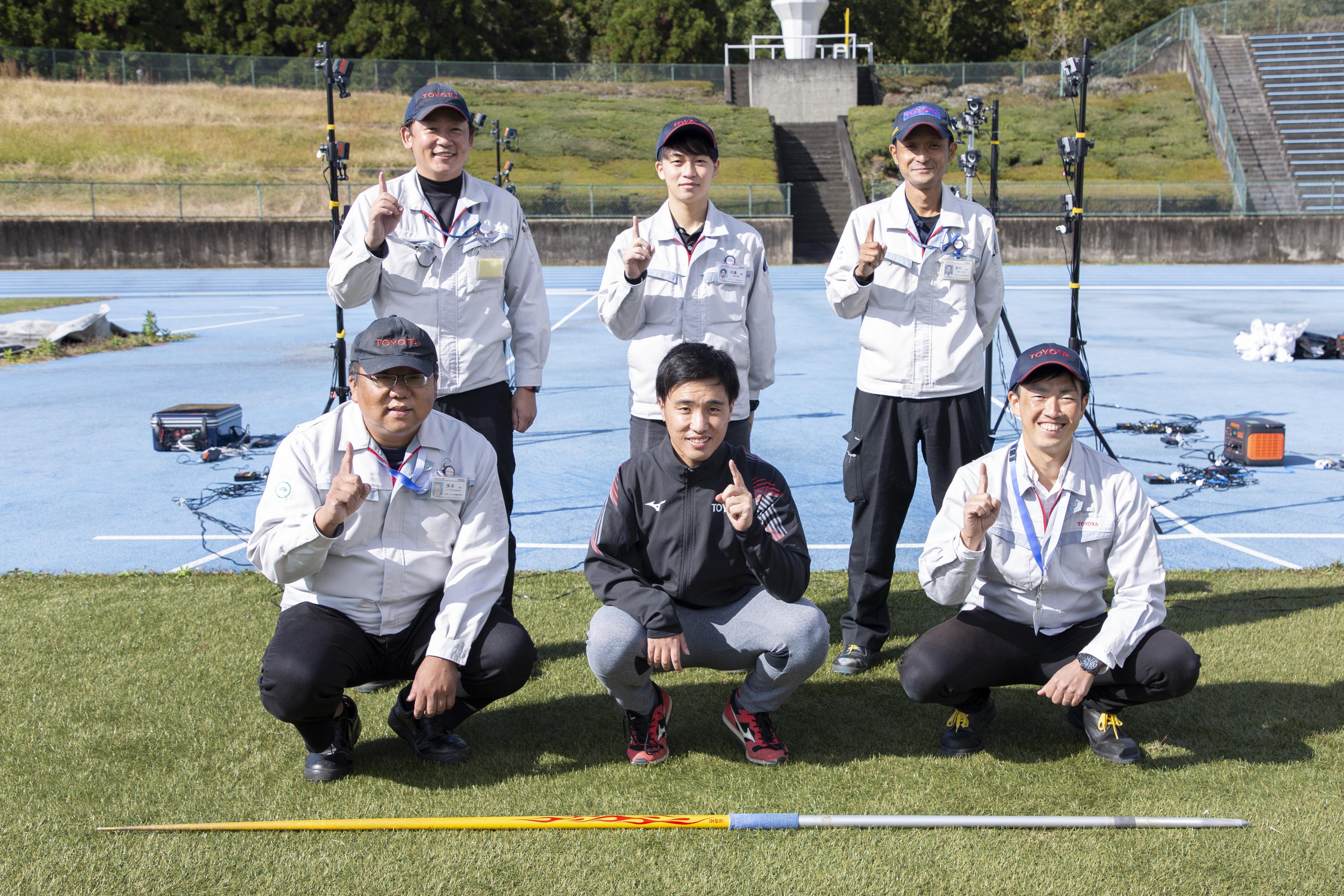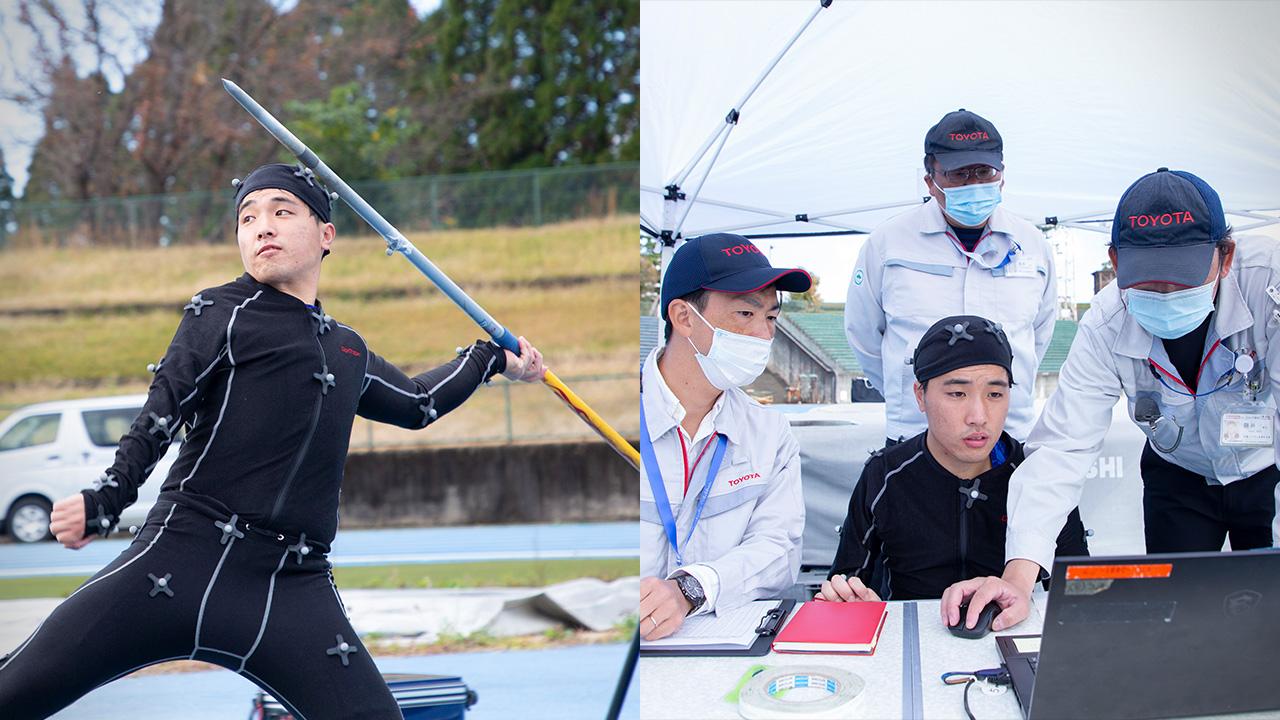
Why is Toyota now using its vehicle measurement motion capture analysis to help athletes? This story shows how this trial can create synergies between athletic performance and vehicle development.

Javelin analysis using motion capture
Out on the athletics ground at Toyota Sports Center, found in the suburbs of Aichi Prefecture’s Toyota City, an athlete has finished his warmup and is about to start javelin throwing practice. His name is Shunya Takahashi, a competitive athlete who placed sixth at the 2019 Dubai World Para Athletics Championships.

Here, Takahashi starts out completely different from the usual competition. He is wearing a black full-body suit, almost like a wet suit, and also a black cap. If you look closely, you find small white markers all over the suit and cap, 57 in total.
Takahashi is not simply practicing his javelin throw. His throwing style is being analyzed with motion capture, using a high-speed camera capable of taking 400 shots a second. When he enters the runway surrounded by an array of 24 high-speed cameras, Takahashi looks a little nervous as he grasps the javelin. It is his first experience of having his form analyzed through motion capture.
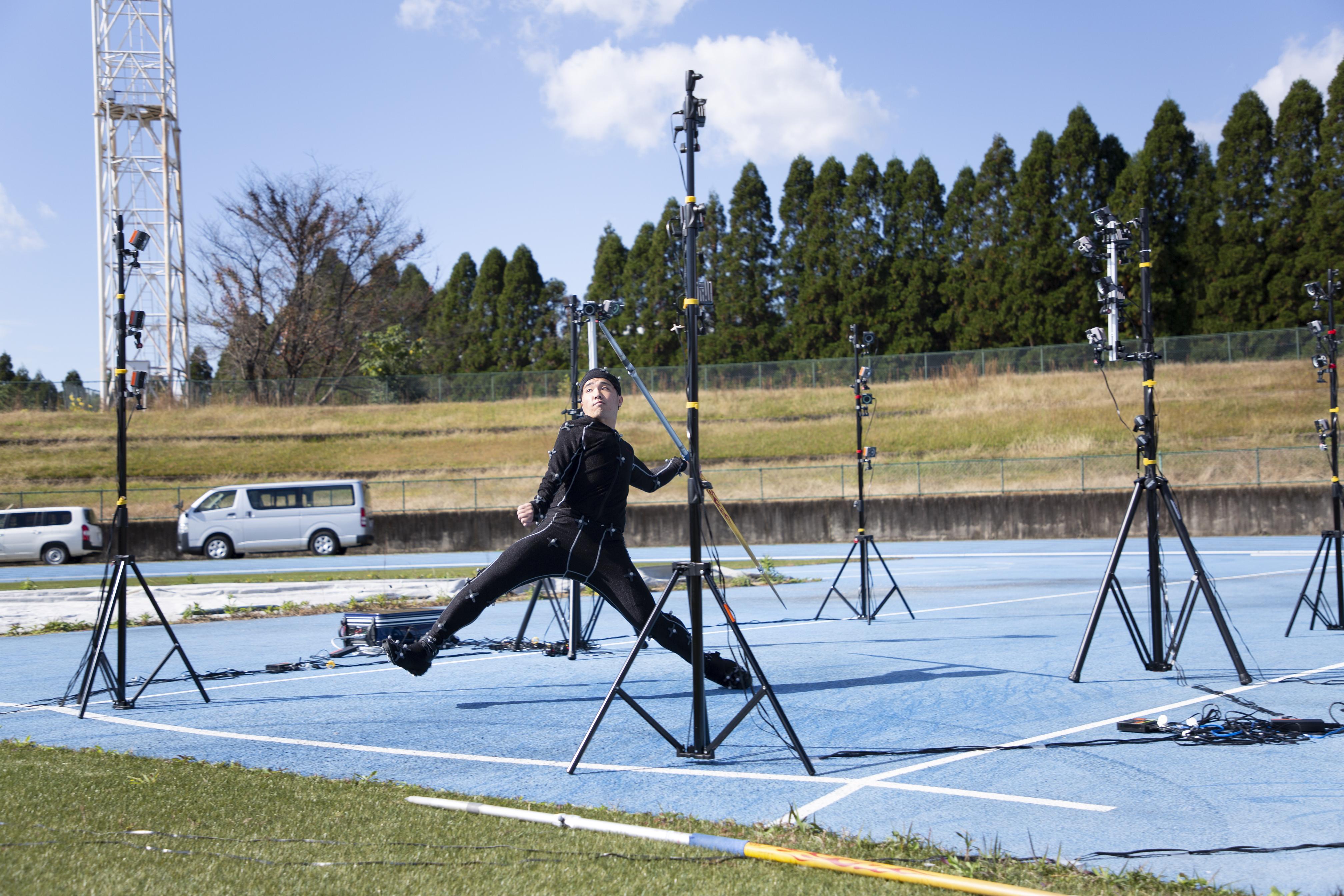
He takes his first throw. The javelin arcs through the air and pierces the ground over 40 meters away. After Takahashi has taken his throw, a man walks up to him and starts asking mainly abstract questions about how he felt when throwing the javelin. This is Junya Sawayama, from the Measurement Instrumentation & Digital Development Innovation Div., Vehicle Development Center. Joining him from the same division is team leader Masahiro Fujimoto, who sits staring intently at a computer screen showing Takahashi’s image.
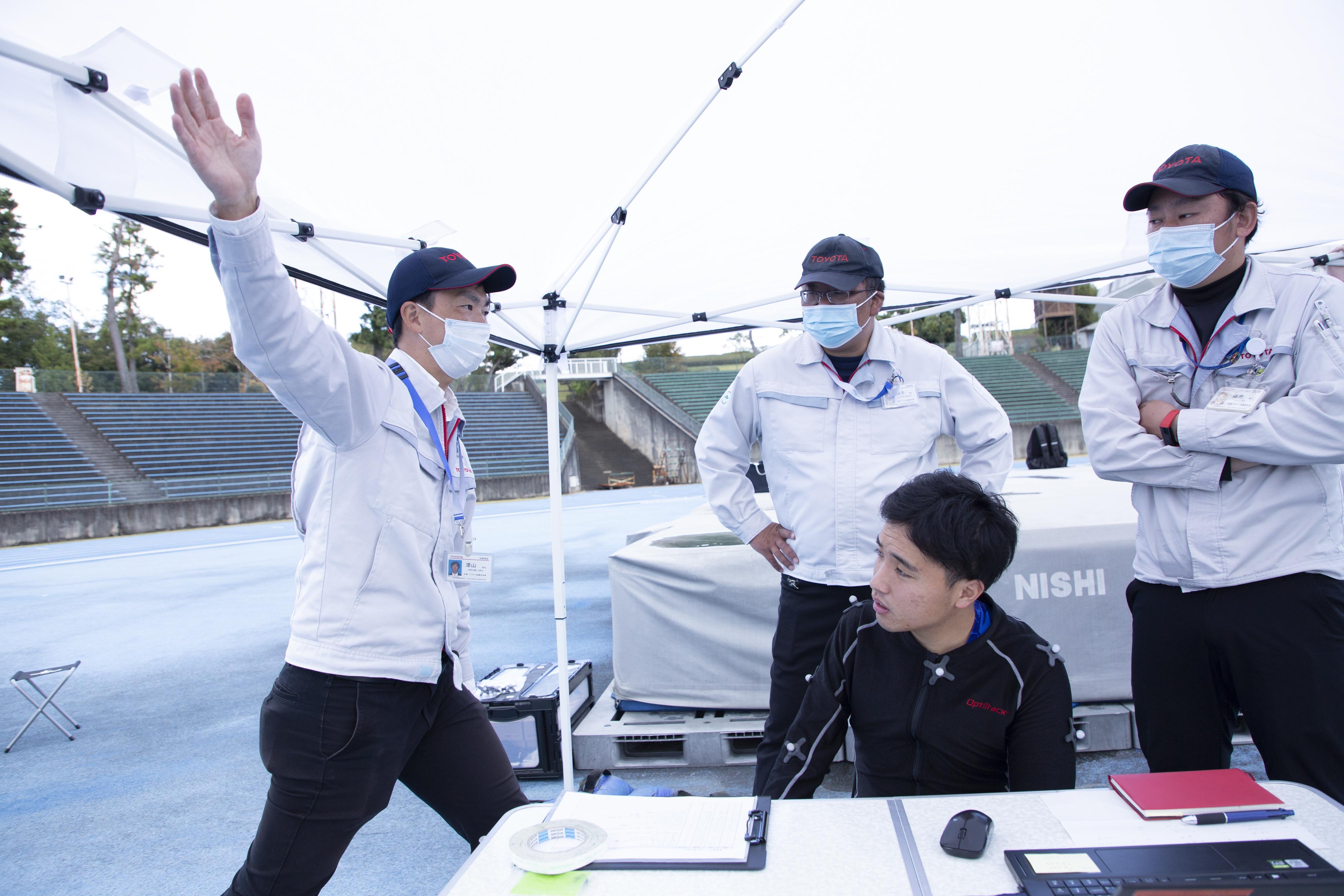
Instant comparisons examining 3D form images
So, why are Toyota engineers analyzing an athlete’s form in the first place? Before going into the background, let’s take a closer look at Takahashi’s throwing style.
The computer screen displays a 3D version of Takahashi, and his form can be checked from any angle in a 360-degree circle by changing the perspective. Takahashi describes his feelings about each throw to Sawayama, and after a few throws the team checks his form and relevant data on the computer screen. He then says to Fujimoto and Sawayama that he wants to compare his fourth and sixth throws because although he felt his fourth throw was the best, the javelin actually flew further on his sixth.
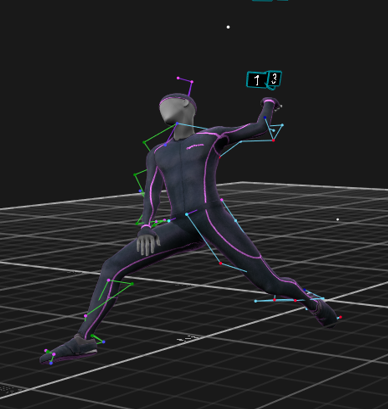
Almost instantaneously, images from both throws are broken down into frame shots, which makes the difference between the fourth and sixth attempts clear. The time it takes from when he takes a step with his dominant left foot to when his right foot lands on the ground is four-hundredths of a second. Takahashi nods his head, accepting the image’s evidence, and heads back to the runway for his next throw.
By the end of the day, Takahashi has made a total of 15 test throws. After training is over, he talks about his first experience of motion capture.
Until now I’ve always checked my form using smartphone videos, but I couldn’t analyze the images and data in detail. The motion capture test was really valuable because it flagged deviations or bad habits in my form that I hadn’t even realized until now. I was also amazed by how quickly you can get the information you want to see.
I’m currently training for the Paris 2024 Paralympic Games and I really want to use this analysis more regularly.
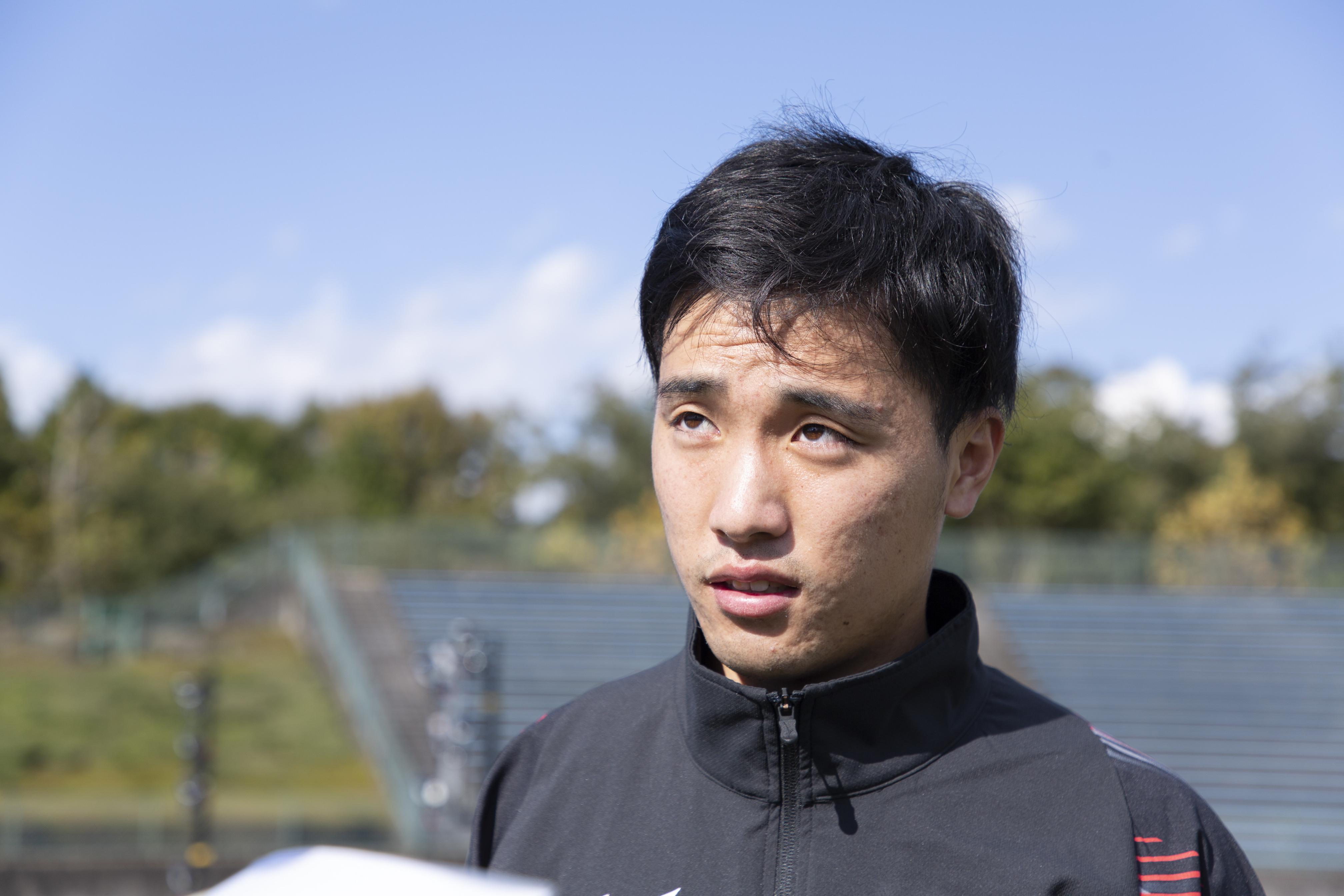
Although the measurements are done for the day, the real data analysis is only just beginning. Sawayama and Takahashi stay in touch to analyze the motion capture data in precise detail so that it can be used in Takahashi’s training.
Motivation for working with athletes is the “human-centered approach”
So why are engineers from the Measurement Instrumentation & Digital Development Innovation Div. analyzing an athletes’ form in the first place? Fujimoto reflects on the background of this project.
Originally, my job in the division was simply to measure data from engines and other components. Then, back in 2018, President Toyoda announced that Toyota would transform from an automobile company into a mobility company in the face of a once-in-a-century period of profound transformation.
At that time, I was working on our division’s mid-to-long-term vision with a few others in our planning group. It was right as we were all thinking about the kinds of transformation we could achieve, when I suddenly thought, ‘I’ve spent my life measuring cars, but I’ve never measured the people who ride in them.’
So, I looked around the company for any kind of initiatives in this area, and although measurements of people are used when a vehicle is in a stationary position, there was very little work being done to measure dynamic human movements while the car is moving. That was what prompted me to decide to start taking measurements of people.
Looking back now, I realize that from around the time that the Woven City concept was announced in 2020 and President Toyoda used the phrase ‘human-centered city,’ I have been hearing the term ‘human-centered’ more and more inside the company, and we have received many requests for advice about human measurement from other divisions. So, maybe that decision I made with my colleagues back then was the right one after all.
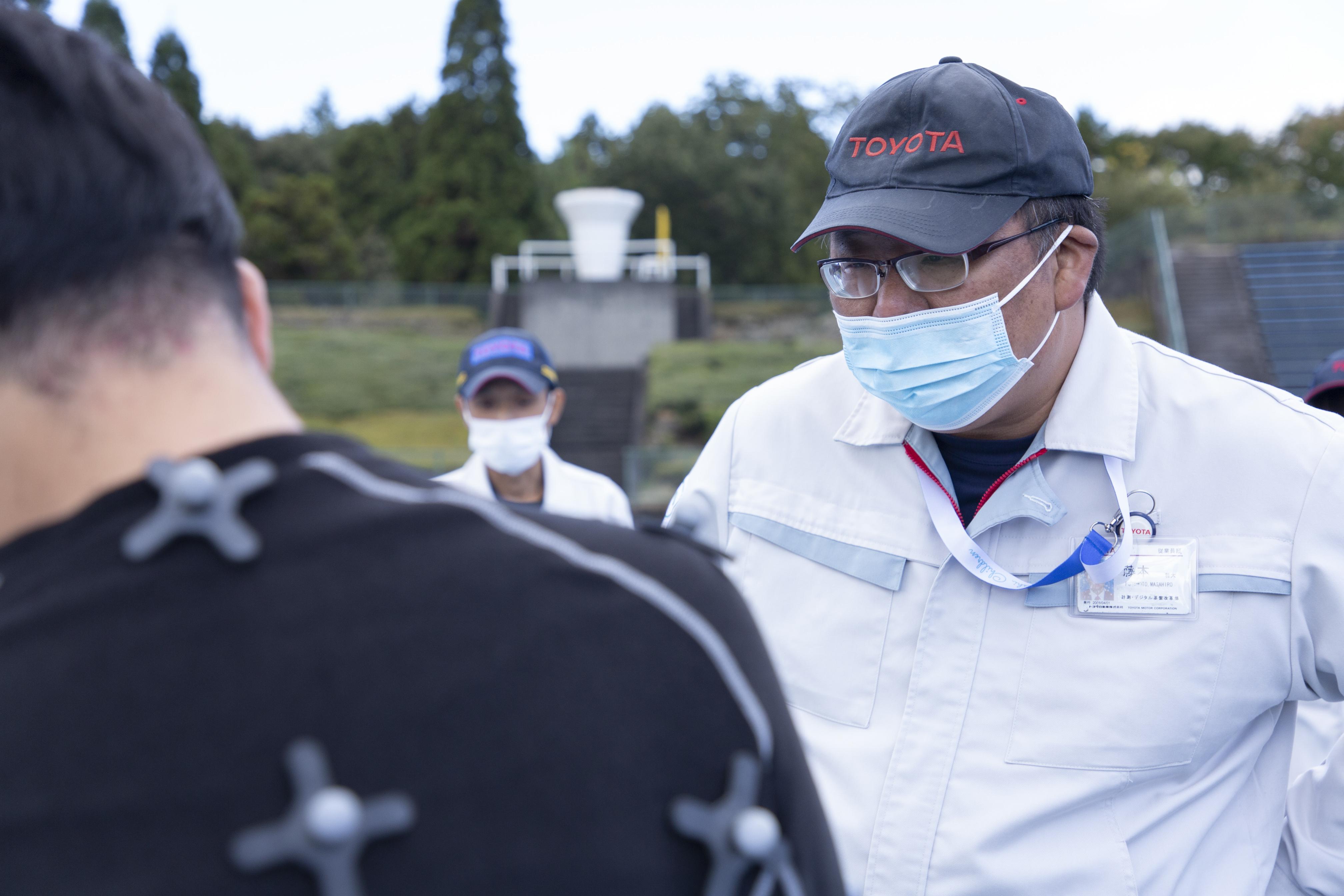
This was how Fujimoto first started out measuring human movements.
How much does the human body move up and down when a vehicle is in motion? How much does a person turn the steering wheel when they want the vehicle to turn to a certain degree? In which direction does a person’s eyeline point when taking a curve on a road? How much force do people put on their feet when cornering?
Fujimoto realized that these are the kinds of questions that could possibly be answered by collecting detailed data and analyzing it, leading to a better ride and the creation of a car that handles just as a driver expects.

Baseball team analyst with an unusual CV wanted to try motion analysis
Junya Sawayama also has an unusual CV. He says that he was interested in analyzing the walking behavior of elderly people and finding ways to assist them in walking when he studied biomechanics at graduate school. It was at that time that he heard that the Toyota Baseball Team was looking for analytical staff.
I was interested in observing people’s movements, so I thought that could be put to good use in analyzing baseball players. So, in 2007 I joined the Toyota Baseball Team as an analyst.
I became a full-time employee of Toyota in 2016 and my only experience up to that time was with the baseball team, and had nothing to do with car making at all.
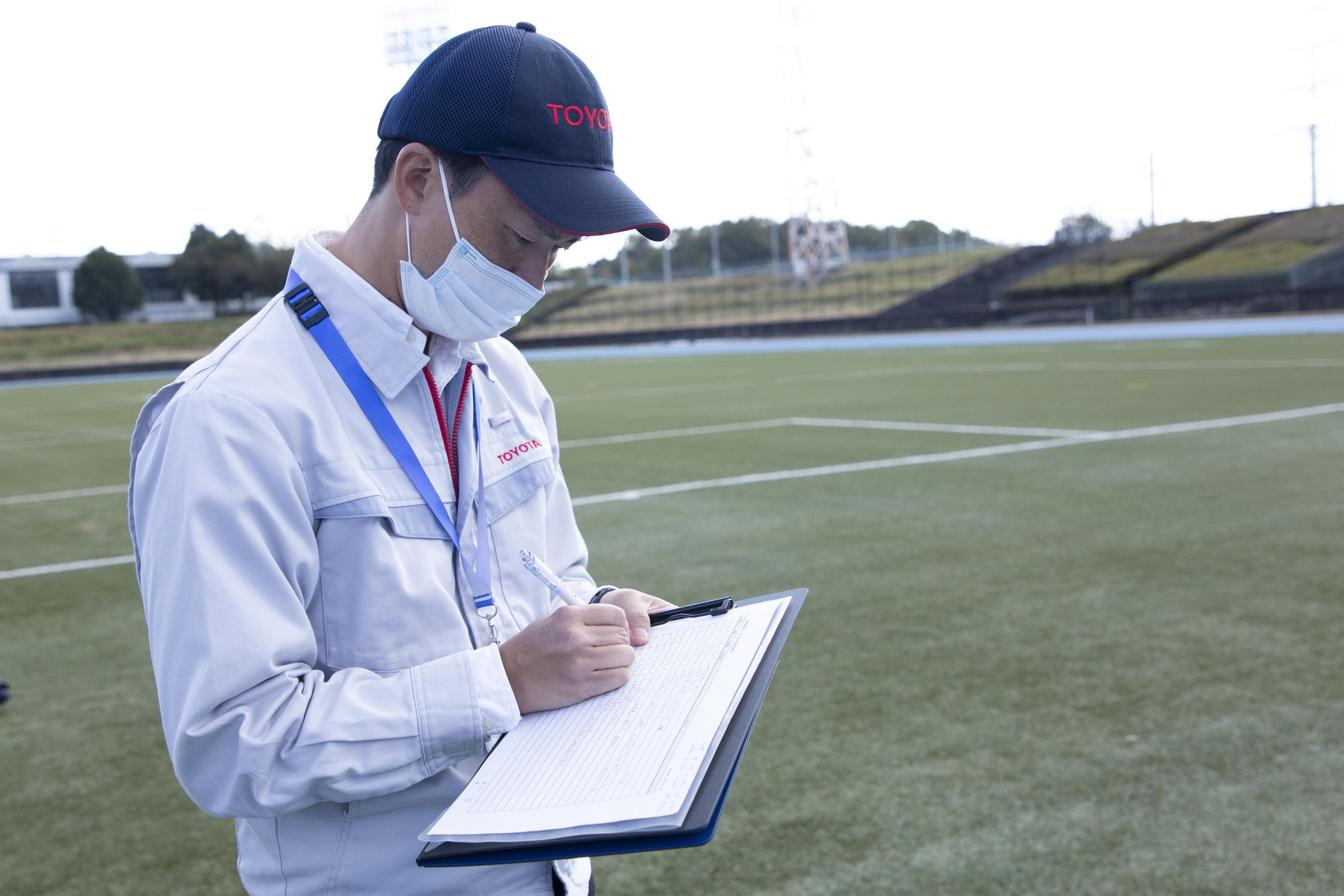
While working as an analyst for the baseball team, Sawayama identified various things that he wanted to try out, like the advanced motion analysis used in Major League Baseball. Coincidentally, Fujimoto heard about Sawayama’s ideas from his senior colleague, who was the chairperson of the baseball team fan club.
This was how the Measurement Instrumentation & Digital Development Innovation Div. started analyzing the form of baseball team players from 2019.
Toyota’s way: ask ‘why?’ five times
Sawayama says that he was both appreciative and surprised that Fujimoto and other engineers in the division stepped up to work so seriously on motion capture analysis.
For example, just before a game, a baseball player came asking for a particular bit of data. Even though they were busy with their work in vehicle development, Fujimoto-san and his team responded by providing detailed data, and it actually helped the player hit a home run in the game.
Another thing was that motion capture is usually used only indoors in a lab environment, and I didn’t think that permission would be granted for the baseball team to use it outside. But once again, Fujimoto-san and his team said ‘Let’s try and see what happens’ and made the equipment available for the team. I was both grateful and more than a little surprised.
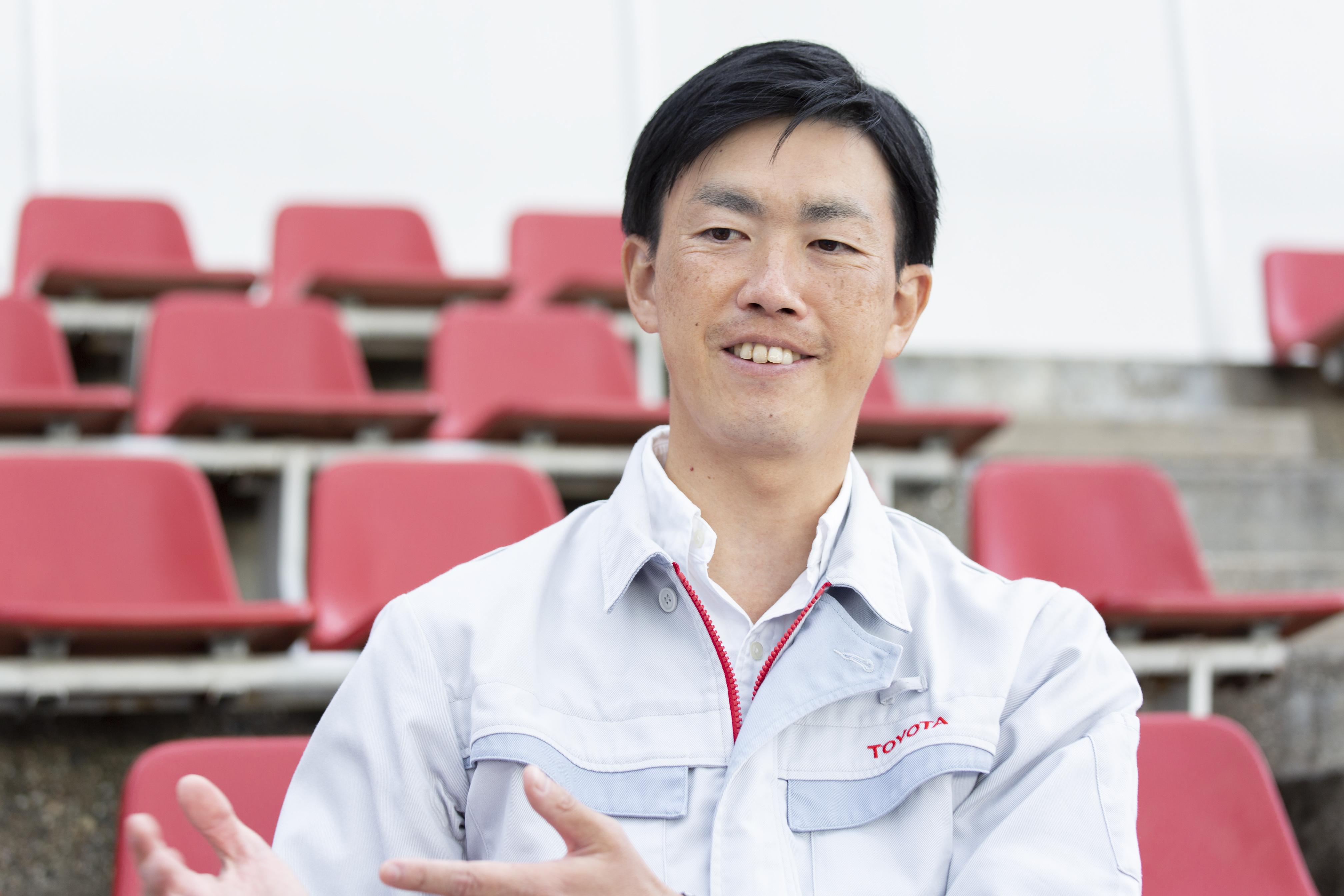
Hearing Sawayama’s comments, Fujimoto himself adds,
My first thought was that I wanted to help in some way because the athletes are all training so hard. There are some world-class athletes and only Toyota has the capabilities to do this kind of motion analysis.
Also, it is probably part of Toyota’s DNA of taking on challenges and trying out something like this. Before saying that we can’t do something, it’s the Toyota way of trying things first and making improvements by asking ‘Why?’ five times.
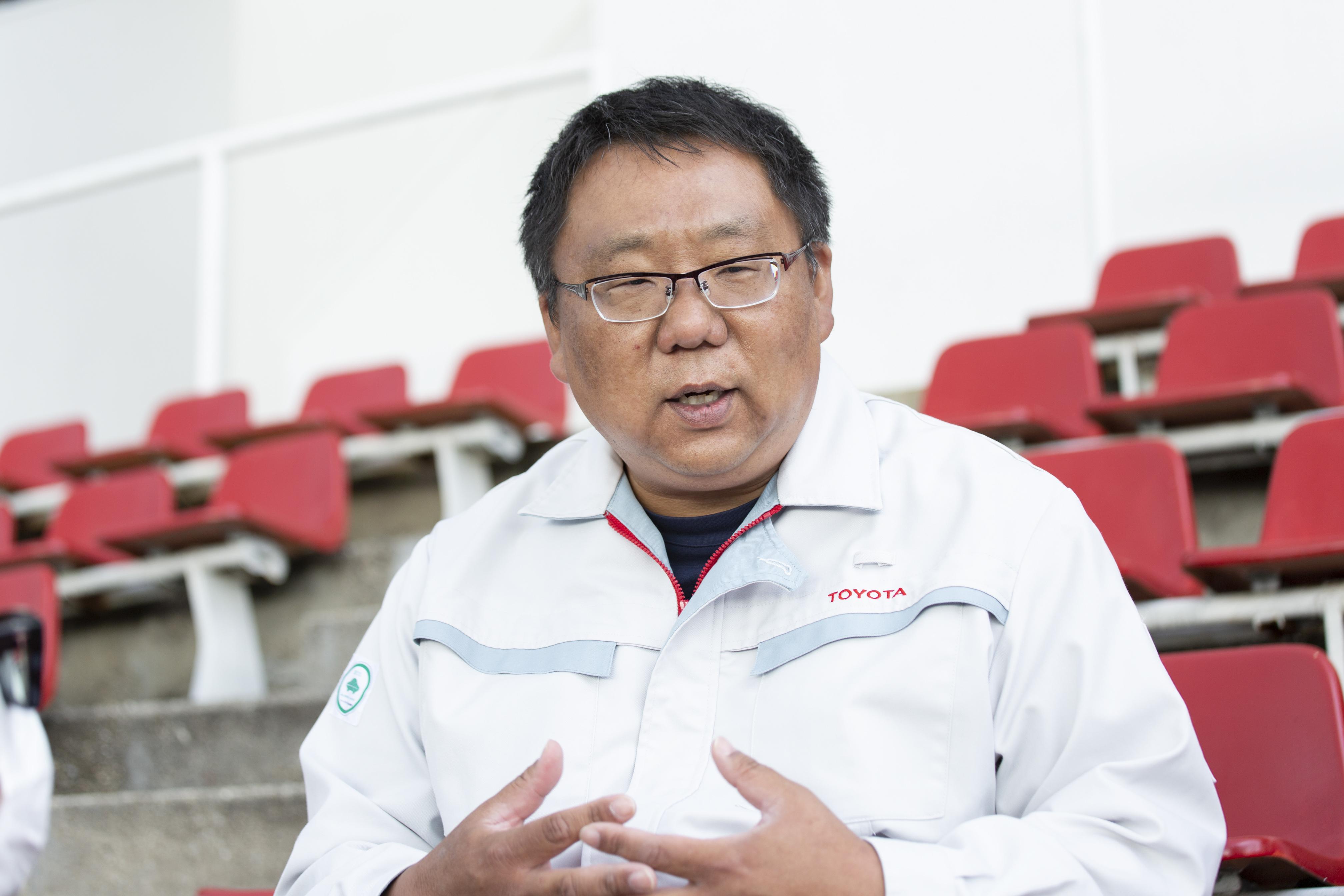
Motion capture started to be used in various sports clubs and teams
Sawayama left the baseball team and joined the Measurement Instrumentation & Digital Development Innovation Div in 2021. This means that motion capture and eye movement analysis are now being used by a wide range of other Toyota sports clubs and teams, including rugby, women’s softball, mogul skiing, and also in tire changing on the motor sports team.
Fujimoto laughs as he says, “The key strength of Japan’s women’s basketball team at the Tokyo 2020 Olympic Games was their 3-point shooting, and I would be very interested in doing some motion analysis to further boost their success rate.”
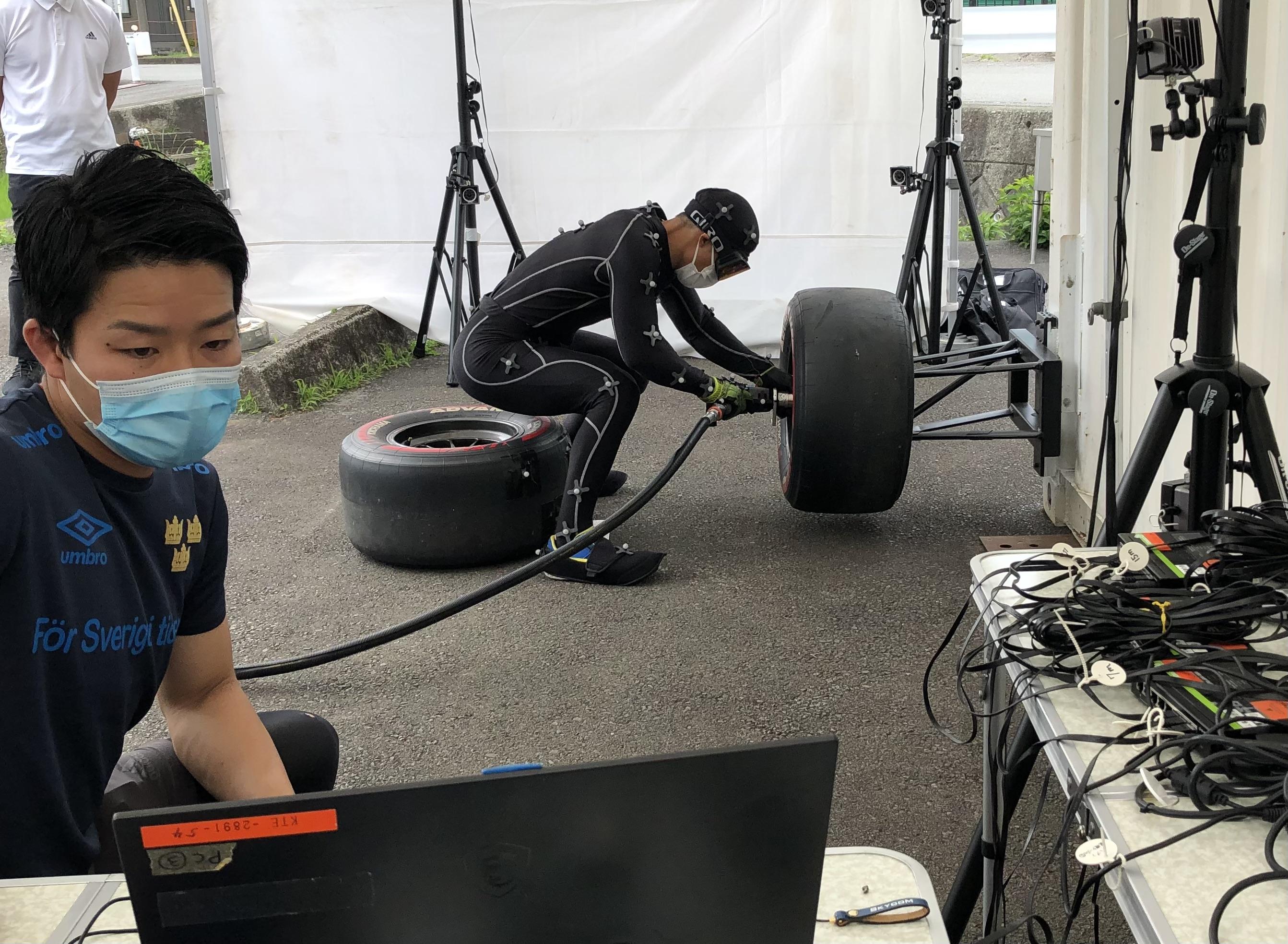
As the smallest unit of mobility, people can significantly help vehicle development
When asked whether it is difficult to incorporate motion analysis of athletes into vehicle development work, Fujimoto has the following to say:
When it comes to motion analysis, it is far more advanced in areas like sports, medicine and science, than in automobiles. That is why the knowledge and skills we can acquire by analyzing sports is tremendously useful in developing vehicles, because people represent the smallest unit of mobility.
For example, in sports it is now possible to conduct motion analysis using just clothing with no marker dots. This impacts precision slightly, but it means that we can gather data in a shorter time than with motion capture using markers.If we could use the same technology for people riding in cars, we could gather a great deal of data. As a result, there is potential for us to discover clearly what the factors are that make for a good ride and driving comfort.
By further expanding this kind of work we can both improve the drive comfort of Toyota vehicles, and make Toyota athletes stronger.
The work of analyzing not just the movement of vehicles but also people is an initiative that represents Toyota’s transformation into a mobility company. Their genuine desire to help athletes is also part of Toyota’s journey of making ever-better cars.
